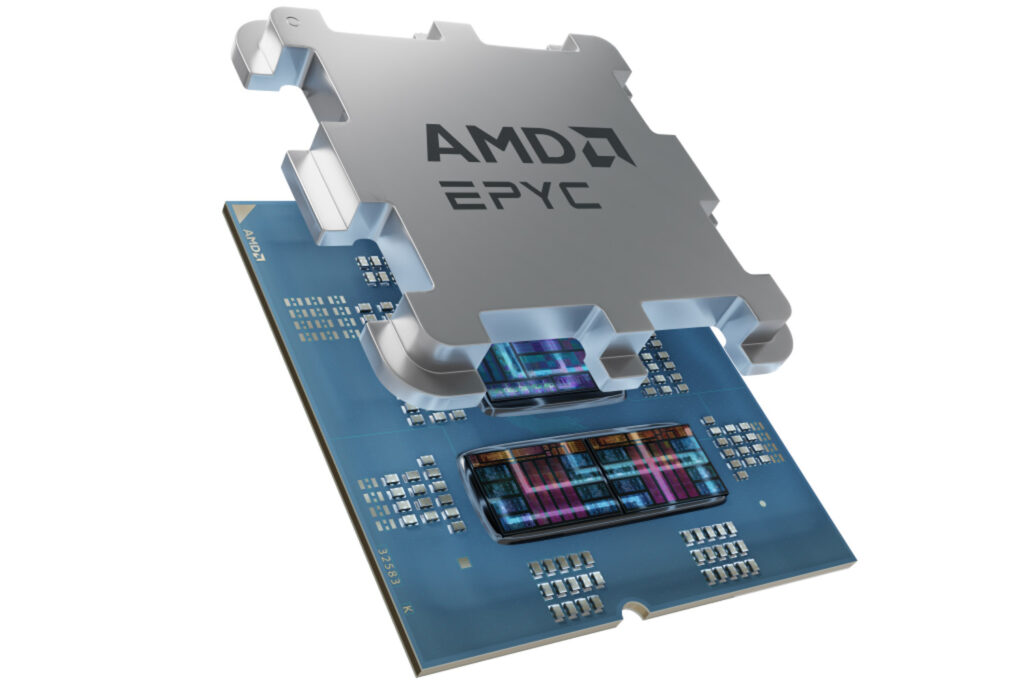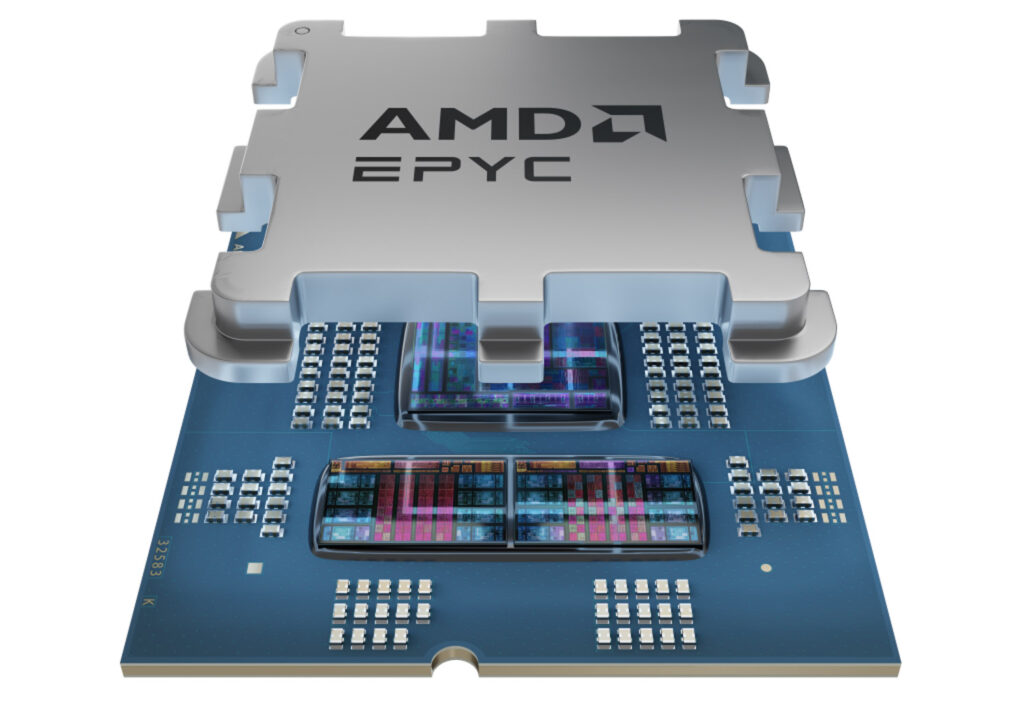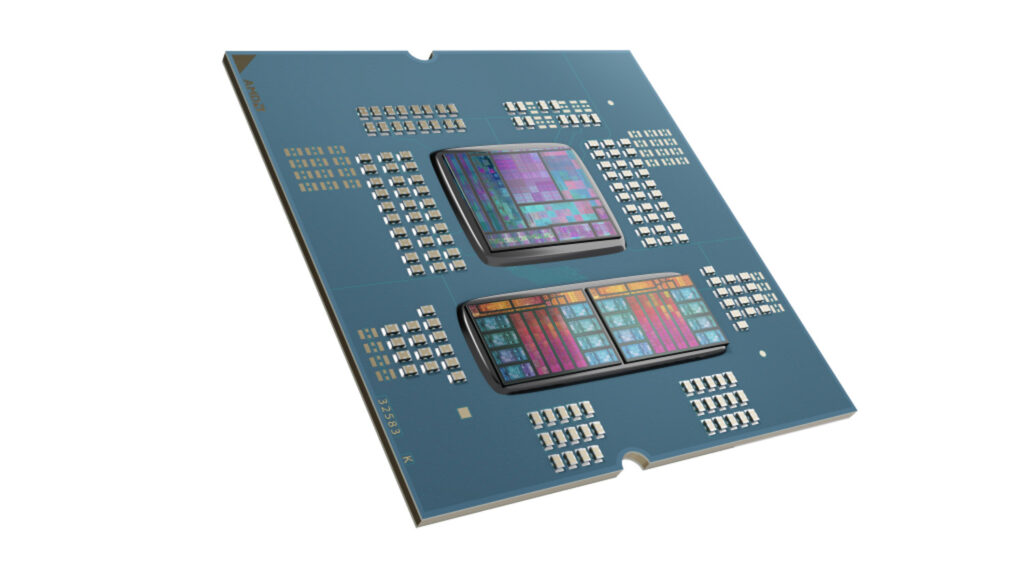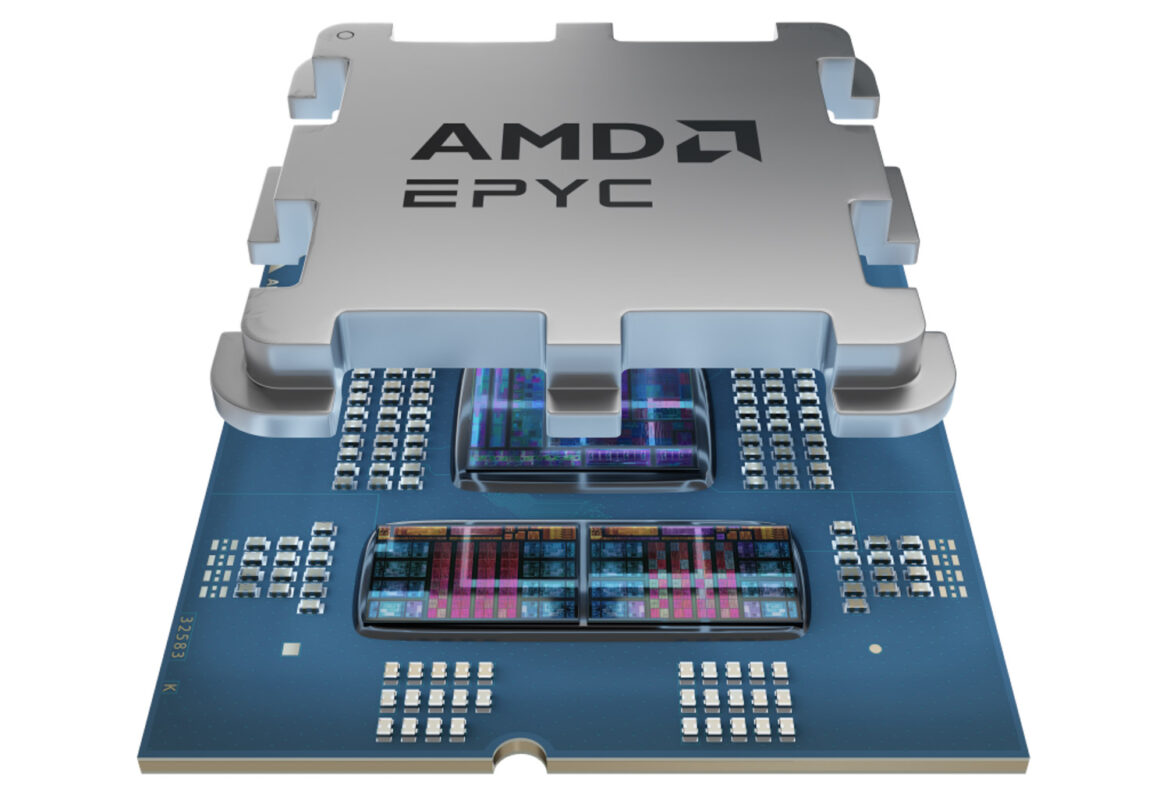AMD EPYC 4005 CPUs bring Zen 5 architecture, ECC support, and power-efficient performance to edge, hosting, and SMB server deployments.
AMD has officially launched its EPYC 4005 Series processors, offering a targeted refresh to its server-class CPU lineup for SMBs, edge deployments, and hosted IT providers. Building on the existing AM5 platform, this new generation is expected to deliver a more refined and performance-tuned version of the EPYC 4004 family with notable architectural and efficiency upgrades. However, apart from a few clear spec bumps and cache enhancements, this generation appears more incremental than major.

What’s New in the EPYC 4005 Series?
At the core of the EPYC 4005 series is AMD’s new Zen 5 microarchitecture, which replaces the Zen 4 cores featured in the 4004 lineup. This change brings several under-the-hood benefits, including architectural improvements contributing to higher overall performance-per-watt, modern memory support, and improved I/O connectivity.
Key Technical Enhancements include:
- Zen 5 cores: Up to 16 cores and 32 threads with full support for Simultaneous Multi-Threading (SMT).
- AVX-512 instruction support with a true 512-bit data path, improving performance in compute-heavy workloads.
- Cache structure: 1MB L2 cache per core, 32MB L3 per CCD; up to 128MB L3 with 3D V-Cache (EPYC 4585PX).
- DDR5 memory support: Dual-channel, up to 5600 MHz with ECC; total memory capacity up to 192GB.
- I/O capabilities: Up to 28 PCIe Gen 5 lanes, USB 3.2, USB4 (optional), DisplayPort 2.0, HDMI 2.1.
- Socket compatibility: AM5 (LGA 1718), maintaining continuity for integrators.
- Security: Features AMD Secure Processor, TPM 2.0, Secure Memory Encryption, and TrustZone-compatible security subsystems.
These updates continue the 4000 series trend of delivering performance-oriented server solutions at a lower cost, providing OEMs and integrators with an upgrade path that maintains compatibility with existing infrastructure.
Last year, we looked at a few EPYC 4004-powered systems, like the MiTAC TYAN HG68-B8016 multi-node server. That platform was well-suited to AMD’s cost-optimized, single-socket strategy. Its modular layout and isolated node architecture enable independent management and serviceability, aligning perfectly with the continuous, multi-tenant demands AMD is now focusing on with the 4005 refresh. With the added efficiency and architectural improvements in Zen 5, platforms will likely benefit even further from the EPYC 4005’s tighter power profiles, enhanced memory bandwidth, and improved per-core performance.
AMD EPYC 4005 SKUs / Pricing
While all EPYC 4005 processors are built on the Zen 5 architecture, each model is tuned with different core counts, cache sizes, and thermal profiles to meet specific needs. The lineup includes options like the 16-core EPYC 4565P with a 170W TDP for high-performance workloads, and low-power models like the EPYC 4545P, which maintains 16 cores at just 65W.

With configurations ranging from 6 to 16 cores, L3 cache sizes up to 128MB, and boost clocks reaching 5.7GHz, AMD has targeted everything from efficient hosting to compute-heavy applications.
The full breakdown of specs and pricing is listed below.
| Model | Arch. | Cores/ Threads |
L3 Cache (MB) | TDP | Base Clock (GHz) | Boost Clock (GHz) | Price (1KU) |
| EPYC 4565P | Zen 5 | 16 / 32 | 64 | 170W | 4.3 | 5.7 | $589 |
| EPYC 4545P | Zen 5 | 16 / 32 | 64 | 65W | 3.0 | 5.4 | $549 |
| EPYC 4465P | Zen 5 | 12 / 24 | 64 | 65W | 3.4 | 5.4 | $399 |
| EPYC 4345P | Zen 5 | 8 / 16 | 32 | 65W | 3.8 | 5.5 | $329 |
| EPYC 4245P | Zen 5 | 6 / 12 | 32 | 65W | 3.9 | 5.4 | $239 |
| EPYC 4585PX | Zen 5 | 16 / 32 | 128 | 170W | 4.3 | 5.7 | $699 |
AMD EPYC 4005 Real-World Performance Expectations
AMD’s Phoronix Test Suite benchmarks claim noticeable gains over previous-generation AMD processors and comparable Intel offerings. This is highlighted by the 16-core EPYC 4565P’s 1.83x advantage over Intel’s Xeon 6300P in geometric mean testing, while even the 6-core 4245P surpassed that same Xeon top-bin part by 16%. Meanwhile, the 8-core 4345P delivered 38% better performance than legacy Intel E-series competitors. These numbers show AMD’s focus on performance-per-dollar, which is especially critical in markets where every watt and dollar count.
It’s worth noting that Intel’s latest generational jump yielded only a 4% performance improvement in AMD’s comparative testing.
AMD EPYC 4005 Consumer constraints
For those knowledgeable about AMD’s consumer processor lineup, the EPYC 4005 series may look similar to the Ryzen 9000 family. Under the hood, these processors share the same Zen 5 architecture and AM5 platform.
However, while the architectures are similar, their intended use and platform requirements are not. EPYC 4005 processors are purpose-built for server environments, with design choices distinguishing them from consumer-grade CPUs. One significant difference is the mandatory ECC memory requirement; the 4005s won’t boot without it. This makes them incompatible with standard consumer motherboards, even though they share the same socket type as Ryzen chips.
AMD EPYC 4005 Use Cases
Nonetheless, AMD explicitly targets the EPYC 4005 at real-world business applications, not just synthetic benchmarks or hypothetical scale. General-purpose computing remains a focus; everything from DNS and file sharing to CRM and ERP systems will benefit from efficient performance and high memory bandwidth.
Single-socket hosting deployments also get a boost. With a balance of core count, memory capacity, and PCIe lanes, AMD says these CPUs are a natural fit for developers and IT service providers running email servers, web platforms, dev/test environments, and light virtualization. For developers, the Zen 5 architecture offers meaningful compilation and build time improvements thanks to high IPC and SMT. Content creators, meanwhile, can benefit from lower render times, especially in environments involving 4K editing, design, or encoding.

Edge and retail applications (for example, in-store analytics, loss prevention, and POS optimization) benefit from the platform’s energy efficiency and compactness. And with rising interest in embedded AI workflows, the 4005 series is also ready for workloads involving content generation, AI-enhanced support chat, and automated business intelligence.
The EPYC 4005 series also supports software RAID through AMD’s RAIDXpert2 utility, giving system builders flexibility regarding storage configurations. It works with up to 14 devices, including SATA drives, M.2 SSDs, and NVMe options like U.2 or HHHL. RAID levels 0, 1, 5, and 10 are supported, and users can mix different RAID levels on the same disks or create arrays from various types of drives. There’s also support for online migration between RAID levels and the ability to expand capacity without needing to take the system offline. Caching options like read-ahead and write-back are available, and hot-swap support is included for systems with compatible backplanes. Operating system support covers Windows Server, RHEL, Ubuntu, and SLES.
AMD EPYC 4005 Availability
All models are officially available today through AMD’s standard distribution channels and partners.
Engage with StorageReview
Newsletter | YouTube | Podcast iTunes/Spotify | Instagram | Twitter | TikTok | RSS Feed

